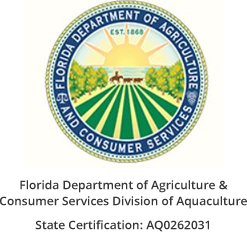Sold as live fish food to feed reef fish, seahorses, and mandarins. Not pets or ornamental livestock.
Live Amphipods – Small (SM) Portion
Volume: 2.5 ml (measured by pod mass, not water)
Estimated Count: ~300–600 live amphipods
Note: Count may vary depending on lifecycle stage, size, and activity at time of packaging.
Perfect For:
- Small reef tanks and soft-coral setups
- Wrasses, dragonets, gobies, and filter feeders
- Pods-only starter packs or cleanup-crew refreshes
Benefits:
- High-quality live food rich in protein and HUFA
- Seeds your tank with a natural clean-up crew
- Reduces detritus and algae through active grazing
Need a Different Size?
Why Amphipods Matter:
Amphipods are vital members of healthy reef ecosystems. These tiny detritivores consume waste, algae, and uneaten food—sometimes up to ten times their body weight daily. Their rapid 7–10 day reproduction cycle supports biodiversity and provides a continuous live-food source year-round.
How They Help Your Reef:
- Improve water quality by lowering organic waste
- Offer a continuous live-food source for hard-to-feed species
- Support long-term tank stability and balance
Important Notes:
- This is a live amphipod culture; species composition may vary naturally.
- Some individuals may be juvenile or microscopic and not visible on arrival.
- To verify density, gently tap the bag and observe movement—visible activity confirms live biomass.
Questions?
We're here to help. Your satisfaction—and your reef’s health—are our top priority.
